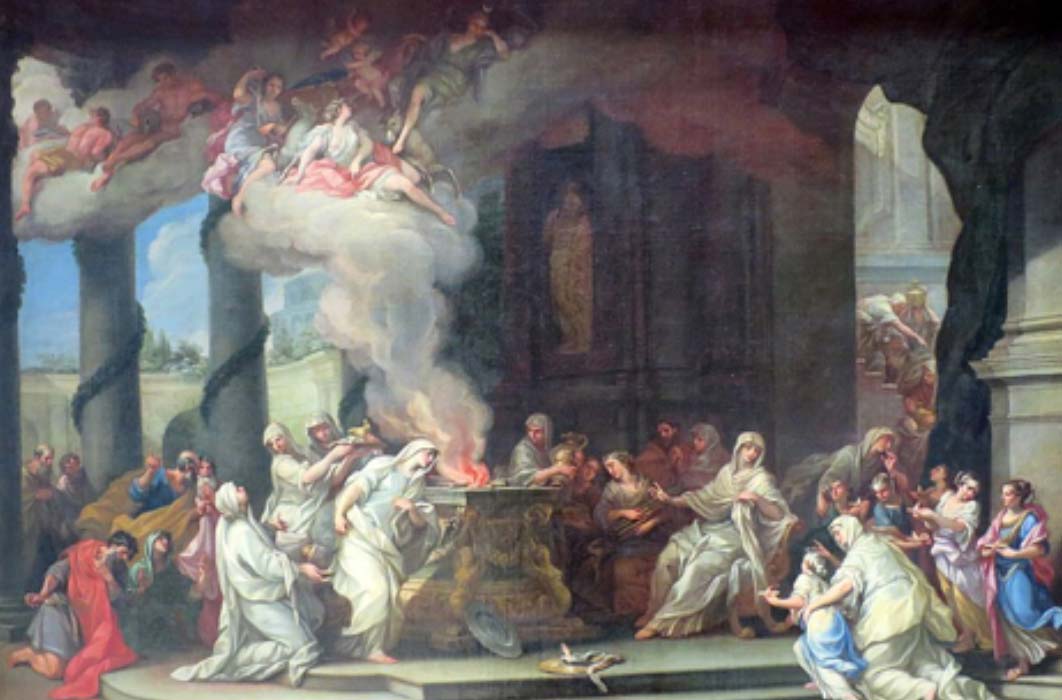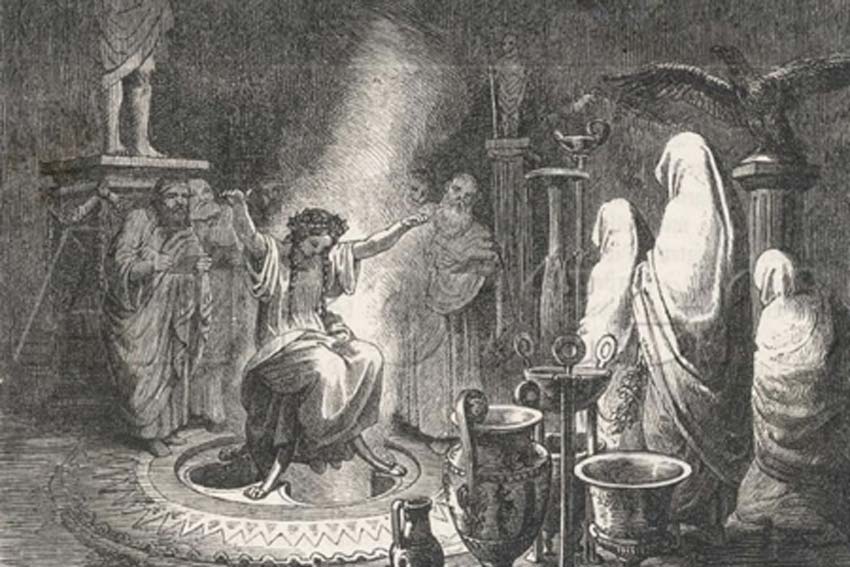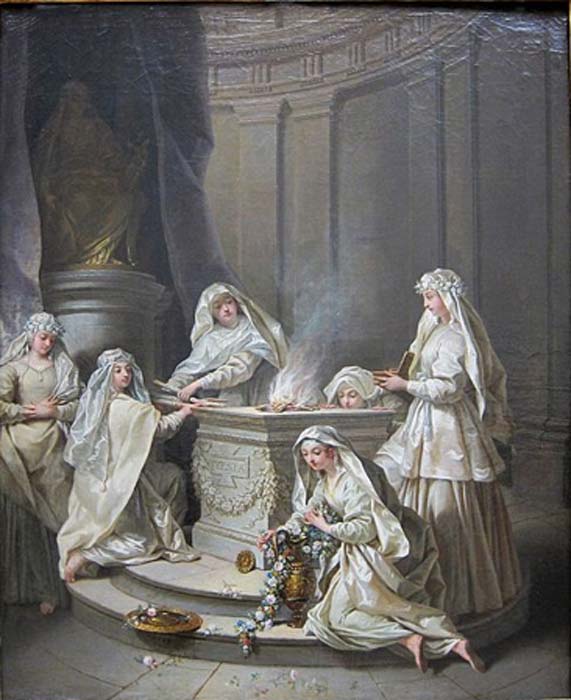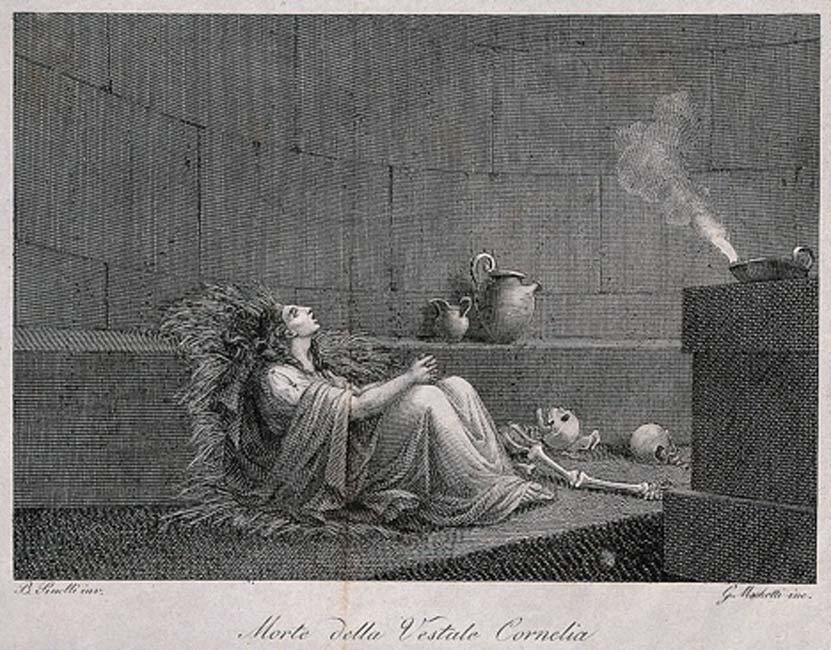
Keepers of the Sacred Flame from Ancient Rome to India
The ability to ignite, maintain and control fire was a dramatic and powerful development in the habits of early humans and changed mankind’s quality of existence forever. Fire generates heat and made it possible for people to cook food, it kept people warm in cold weather and it kept nocturnal predators at bay. Apart from playing a central role in basic human survival, fire also served as a spiritual or religious symbol in ancient civilizations, leading to the concept of the sacred fire. As fire was considered to be an agent of purity and as a symbol of righteousness and truth, a sacred fire was often an altar for the offering of sacrifices and prayers. Therefore, those entrusted with tending this flame held a sacred, important and very demanding role in the culture.

The Oracle of Delphi Entranced by Heinrich Leutemann (1824 – 1905) (Public Domain)
In the Temple of Apollo in ancient Greece in the seventh century BC, no women except the Pythia, the oracle of Delphi, were allowed into the innermost part of the temple. However, there were still women who kept the sacred fire of laurel wood going on the inner sacred hearth.
The Vestal Virgins of Rome
The Roman poet Horace (65 - 8 BC) said that Rome would stand: “as long as the pontifex climbs the Capitoline beside the silent Virgin.” The ‘silent Virgin’ that Horace was referring to was a Vestal Virgin from the College of the Vestals. Historians Livy, Plutarch and Aulus Gellius attribute the creation of the Vestals as a state-supported priestesshood, to king Numa Pompilius, who reigned circa 717–673 BC. Numa was evidently very involved in the founding of the Temple of Vesta. He appointed the first two priestesses and assigned them salaries from the public treasury, appointed the pontifex maximus to watch over the Vestals, and was even said to have taken the first Vestal away from her parents himself.

Ancient virgins by Jean Raoux (1727) Palais des Beaux-Arts in Lille (Public Domain)
Vesta is the Roman goddess of the hearth and home. Therefore, her role in symbolizing the Roman state was as the hearth and heart of Rome. Standing literally at the center of the city and serving to bind the city together, the goddess’ official title was Vesta publica populi Romani Quiritium (Vesta of the Roman People). Therefore, the primary role of the Vestal Virgin was a public cult as well as an embodiment of the city and citizenry of Rome. The College of the Vestals and its well-being were regarded as fundamental to the continuance and security of Rome as the Vestal Virgins cultivated the sacred fire that was never allowed to go out. The virgin priestesses of Vesta were committed to the priestesshood before puberty and sworn to celibacy for a period of 30 years. Their tasks included the maintenance of the sacred fire of Vesta, the collection of water from a sacred spring, preparation of food used in rituals and the care for sacred objects in the temple's sanctuary. They were also put in charge of keeping safe the wills and testaments of powerful people such as Julius Caesar and Mark Antony.

Cornelia, the Vestal Virgin, entombed alive surrounded by bones in the dungeon. Line engraving by G. Machetti after B. Pinelli. (Wellcome Images / CC BY-SA 4.0)




